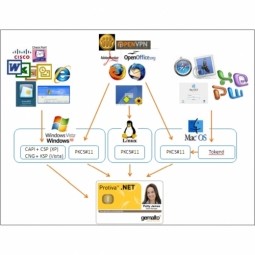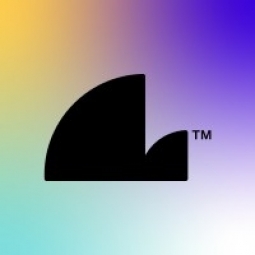技术
- 传感器 - 电表
- 可穿戴设备 - 智能服饰
适用行业
- 服装
- 生命科学
适用功能
- 产品研发
- 质量保证
用例
- 驾驶员表现监测
- 资产跟踪
关于客户
Stand 21 的客户主要是专业赛车手,其中包括多位一级方程式赛车手。这些客户需要专门的比赛服装,不仅要防火,而且要舒适、透气。比赛服装还必须根据车手的意愿进行定制,包括徽标、赞助商名称和各种其他图像。客户非常看重 Stand 21 产品的高质量和安全标准,以及订单的快速周转时间。客户通常会在十天内收到订单,这比 Stand 21 的竞争对手(通常需要长达十周)有显着优势。
挑战
Stand 21是一家法国公司,自1970年以来一直设计和生产特殊比赛服装。该公司的产品受到3000名客户的高度评价,其中包括多名一级方程式赛车手。 Stand 21 面临的挑战是设计和生产对车手来说不仅安全而且舒适的防火赛车服。比赛服装包括巴拉克拉法帽、工作服、手套、靴子,甚至内衣——全部由防火材料制成。衣服还必须足够透气,能够吸走驾驶员的汗水并保持凉爽。该套装最多有三层,所有缝线和接缝也都是防火的。这些衣服都是手工精心制作的,以确保符合严格的安全和质量标准。该公司还必须根据车手的意愿定制每套服装,包括徽标、赞助商名称以及使用防火线绣在服装上的各种其他图像。
解决方案
第 21 号展位通过使用 CorelDRAW Graphics Suite 找到了应对挑战的解决方案。该强大的图形软件供法国勃艮第地区公司总部、欧洲子公司和所有全球特许经营公司的设计师使用。 CorelDRAW 是无可争议的赛车服设计标准。该软件对于设计徽标、龙和其他图片特别有用。在 Stand 21 图形艺术家和车手或赞助商之间的设计会议期间,可以在电脑前实时修改赛车服。徽标可以放置在不同的位置、改变接缝、加长袖子,这一切都归功于 CorelDRAW。该软件显着缩短了设计一套西装的时间,从 6 小时缩短到 20 分钟。
运营影响
数量效益

Case Study missing?
Start adding your own!
Register with your work email and create a new case study profile for your business.
相关案例.

Case Study
Fire Alarm System and Remote Monitoring Sytem
Fire alarm systems are essential in providing an early warning in the event of fire. They help to save lives and protect property whilst also fulfilling the needs of insurance companies and government departments.Fire alarm systems typically consist of several inter-linked components, such as smoke detectors, heat detector, carbon monoxide, manual call points, sounders, alarm and buzzer. The fire alarm system should give immediate information in order to prevent the fire spread and protect live and property.To get maximum protection a shoe manufacturer in Indonesia opted for a new fire alarm system to monitor 13 production sites spread over 160 hectars. Although the company had an existing fire alarm system, it could not be monitored remotely.It was essential that the new system would be able to be monitored from a central control room. It needed to be able to connect to the existing smoke detector and manual call point. Information should be easily collected and passed on to the Supervisory Control and Data Acquisition (SCADA) system. Furthermore, the system should have several features such as alarm management, auto reporting, being connected to many client computers without additional cost, and run 24/7 without fails. The company also needed a system which could be implemented without changing the architecture of the existing fire alarm system.

Case Study
IoT Applications and Upgrades in Textile Plant
At any given time, the textile company’s manufacturing facility has up to 2,000 textile carts in use. These carts are pushed from room to room, carrying materials or semi-finished products. Previously, a paper with a hand-written description was attached to each cart. This traditional method of processing made product tracking extremely difficult. Additionally, making sure that every cart of materials or semi-finished products went to its correct processing work station was also a problem. Therefore, the company desired an intelligent solution for tracking assets at their factories. They also wanted a solution that would help them collect process data so they could improve their manufacturing efficiency.

Case Study
Retailer Uses RFID Scanner to Improve Efficiency
Patrizia Pepe wished to improve the logistics of their warehouse: accepting incoming goods from their production sites, movement of items throughout
the warehouse, and packaging of goods for distribution to the retail locations. They initially tried to use barcodes for this function. Because barcodes must be individually scanned within a line-of-sight, the acceptance of goods coming into the warehouse was too time consuming. Working with the University of Florence, Patrizia Pepe instituted a five-month pilot project beginning in August of 2009 to test the validity of an RFID solution. The pilot involved tagging of about 60,000 items for the second seasonal collection, and convinced the company to move forward with tagging all items.

Case Study
Monitoring and Controlling Automatic Mixing and Dispensing Machines
As technology advances, textile manufacturing has been transformed from a labor-intensive to a partially or fully automated industry. Automation is significant in all segments of textile production - from spinning to printing, and textile machinery manufacturers are constantly searching for new technologies and automation processes will increase the productivity of their machines. The color paste mixing and dispensing machine is an essential part of the printing and dyeing process. With the advantage of automatically computerized controls and database management, the system can significantly improve its dispensing precision, working efficiency and production quality as well as reducing material consumption.

Case Study
Corporate Identity Solution Adds Convenience to Beckman Coulter
Beckman Coulter wanted to implement a single factor solution for physical and remote logical access to corporate network. Bechman Coulter's users were carrying smart card badges for doors, but also needed a one-time password token to access to our corporate network when they were not in the office. They wanted to simplify the process.




